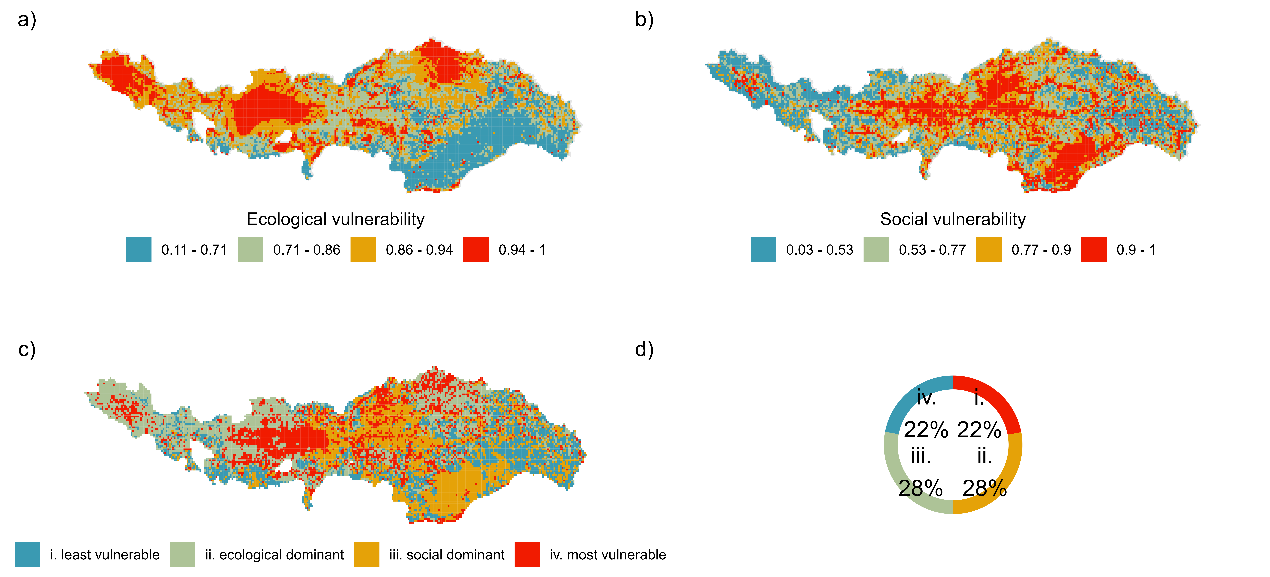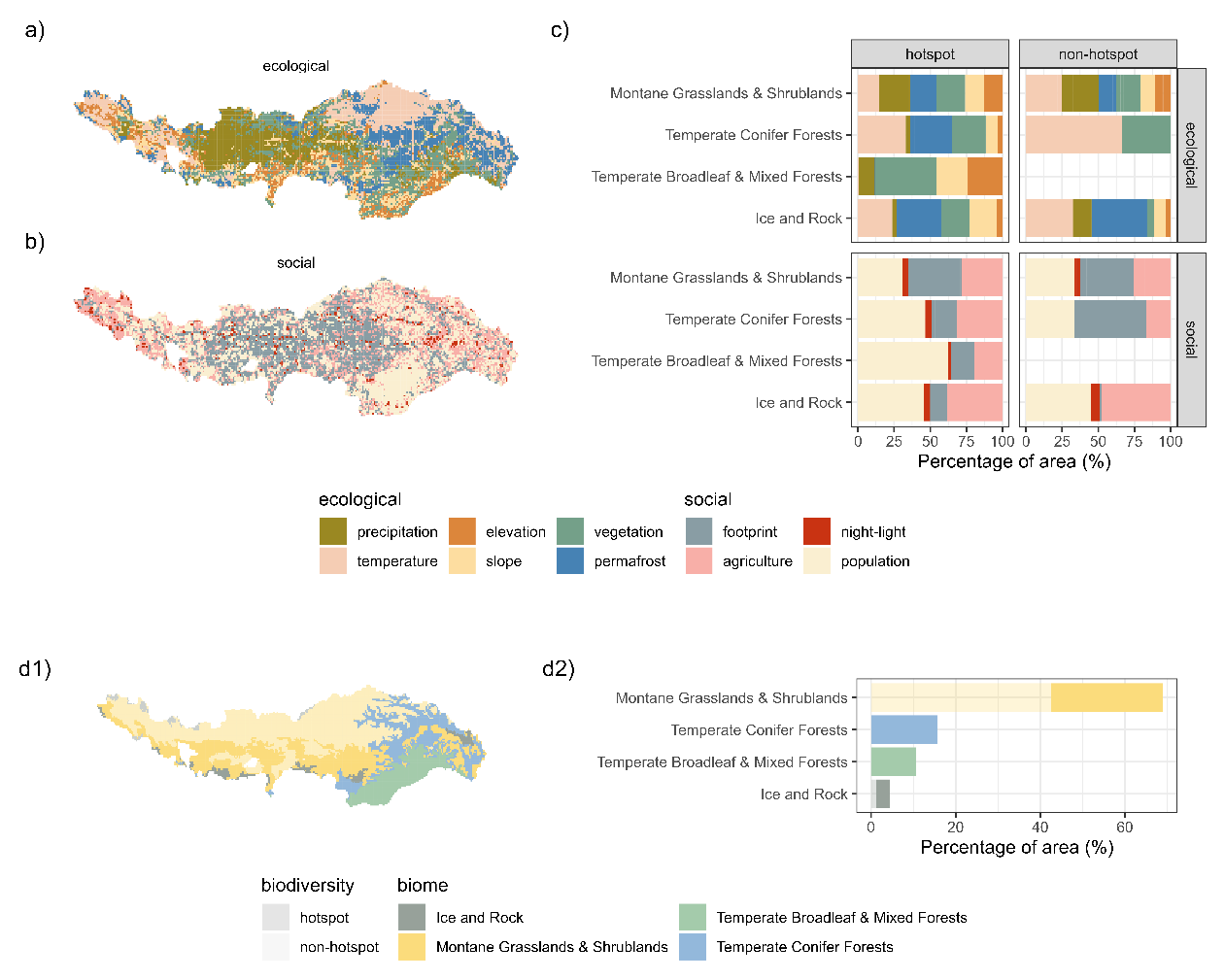
Biodiversity is critical to humanity's sustainable future, but global species extinction is accelerating due to environmental changes and human activities. The Yarlung Tsangpo River, which originates in the Himalayas, flows through one of the world's most biodiverse yet ecologically sensitive regions—making it vital to understand the area's vulnerability for both global biodiversity preservation and regional conservation efforts.
Recently, a research team led by Prof. ZHANG Quanfa from the Wuhan Botanical Garden (WBG) of the Chinese Academy of Sciences (CAS) has conducted a comprehensive assessment of the region's ecological and social vulnerabilities using advanced Geographic Information System (GIS) tools and big data analytics. The study evaluated factors including climate change, vegetation degradation, and human activities. Their findings were published in the Journal of Environmental Management.
Key findings indicate that fluctuations in temperature and precipitation are the primary drivers of ecological vulnerability, with the most affected areas concentrated in the western and northern parts of the river basin.
Additionally, this study highlights significant conflicts between development and conservation. Population density and human activities are major threats, impacting 39% and 31% of the basin, respectively. These vulnerabilities are particularly clustered along the central river and in the southeast. Notably, 22% of the entire area is facing high levels of both social and ecological vulnerability.
The main sources of social and ecological vulnerabilities show considerable spatial variation. The dominant factors differ for areas within and outside the biodiversity hotspot. In regions within the global biodiversity hotspot, vegetation loss presents a more immediate threat, while in non-hotspot areas, climate variations are the primary concern.
"The study provides a dynamically temporal and spatially explicit evaluation, equipping decision-makers with new insights to sustain the biodiversity of this vital ecosystem," the researchers noted.
This work was funded by the National Natural Science Foundation of China and CAS.

Social-ecological vulnerability assessment for the Yarlung Tsangpo River Basin. Ecological (a) and social (b) vulnerabilities are estimated for each pixel, warmer colors indicate higher vulnerabilities, and cooler colors lower. The four classes are defined based on the social and ecological vulnerabilities (c) and their respective areas as a percentage of the entire basin (d). (Image by WBG)

The most vulnerable aspects of ecological (a) and social (b) vulnerabilities of the Yarlung Tsangpo River Basin determined for each pixel; and percentages of areas occupied by each aspect for being the most vulnerable aspect for ecological vulnerabilities and social vulnerabilities, summarized for areas divided by the biomes and the biodiversity hotspots (c). The division of the entire basin by the biomes and whether the area is within the global biodiversity hotspot (d1), and the percentages of areas of each division (d2). (Image by WBG)

86-10-68597521 (day)
86-10-68597289 (night)

52 Sanlihe Rd., Xicheng District,
Beijing, China (100864)

